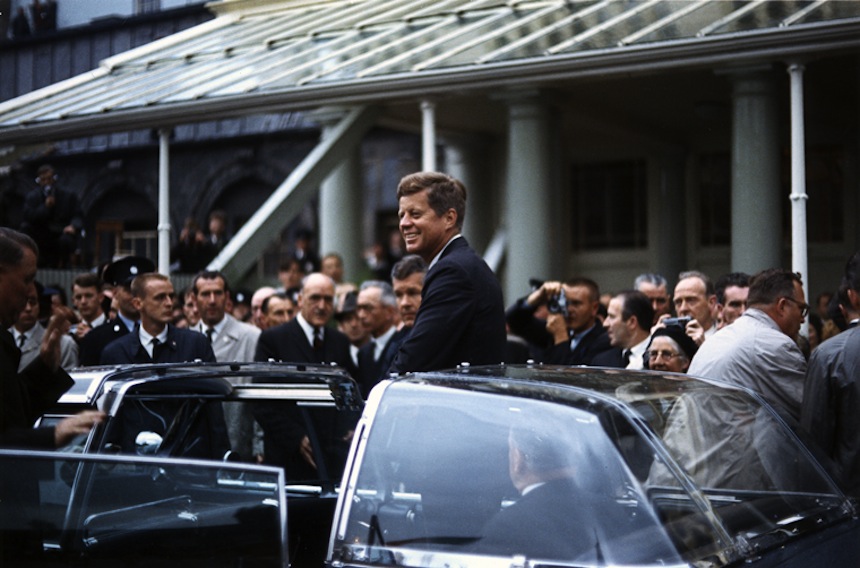Throwback Thursday: JFK’s Trip to Ireland

JFK in Ireland. Robert Knudson, via Wikimedia Commons
In the 1840s, fleeing the famine that ravaged their homeland, many Irish families fled to Boston. There they found work and refuge, but also discrimination. Among them were Fitzgeralds and Kennedys, ancestors of a future American president.
On June 27, 1963, President John F. Kennedy finally made the return trip to Ireland. It was a visit that brought that thread of history for both Boston and Ireland full circle. The Irish greeted him like royalty. The Boston Globe front page declared that, “John Fitzgerald Kennedy barely squeaked to election as President of the United States, but it seemed Thursday that he was King of Ireland by popular demand.”
Kennedy spent much of his visit acting as the state leader, remarking on Ireland’s politics and relationship with Great Britain. But he also spent some moments embracing his family’s ancestry. He visited the port of New Ross, where his great-grandfather Patrick Kennedy had set sail for Boston, and told those standing by:
“When my great-grandfather left here to become a cooper in East Boston, he carried nothing with him except two things—a strong religious faith and a strong desire for liberty. I am glad to say that all of his grandchildren have valued that inheritance.”
Later at Dunganstown, Kennedy and two of his sisters visited his family’s ancestral homestead. They met several cousins, and Kennedy toasted (with his afternoon tea), saying, “I want to drink a cup of tea to all those Kennedys who went and all those Kennedys who stayed.”
For Boston, the visit provided a reminder of both the adverse circumstances by which many Irish had come to the city and the extent to which they had improved their situation in the century since. It had, Kennedy suggested in his speech to the Irish Parliament, taken altogether too long to get an Irishman in the White House. “I know that the White House was designed by James Hoban, a noted Irish-American architect, and I have no doubt that he believed by incorporating several features of the Dublin style he would make it more homelike for any President of Irish descent,” he told the assembly. “It was a long wait, but I appreciate his efforts.”


